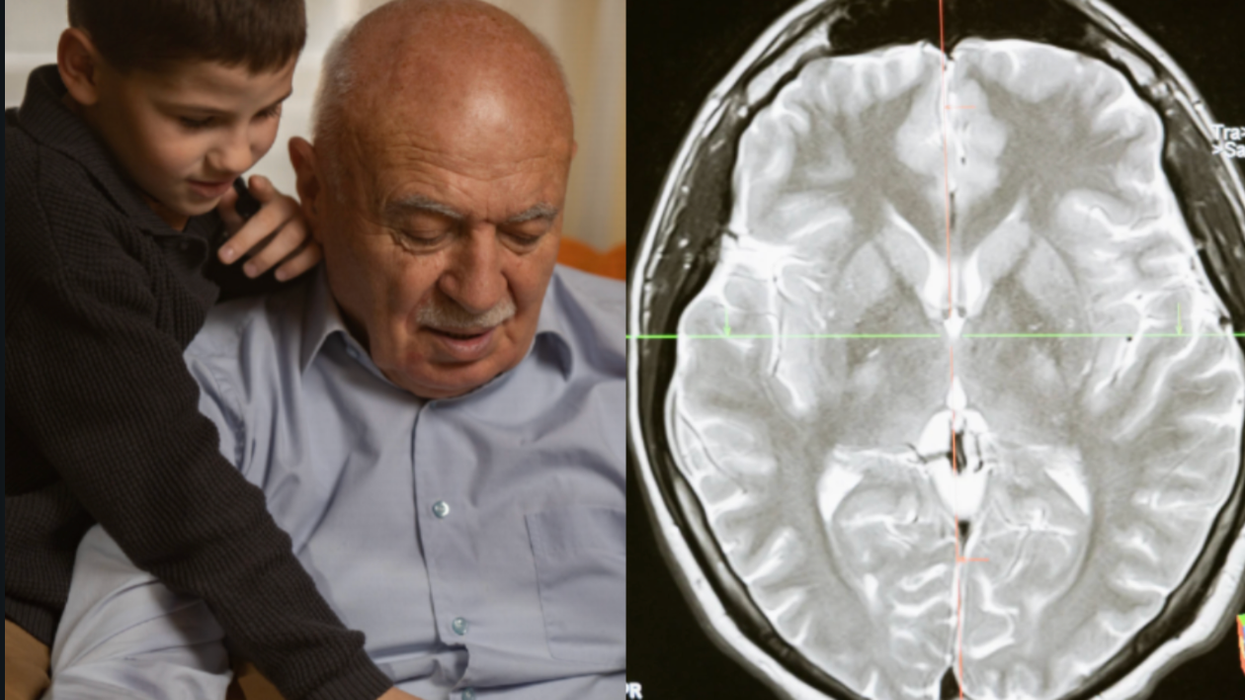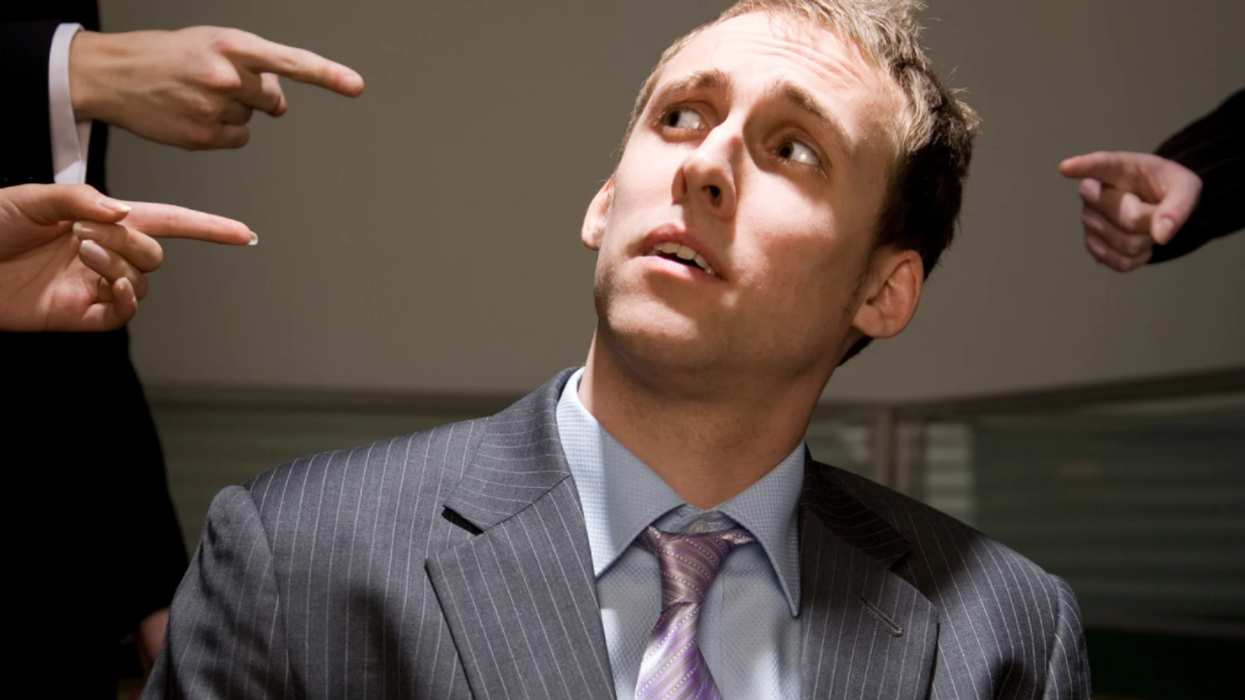On March 28, 2013, only two weeks after he was elected, Pope Francis celebrated Holy Week in a jail in Rome. For the previous thousand years, hundreds of popes had re-enacted Jesus washing the feet of his disciples at the Last Supper, ceremonially pouring holy water over the toes of priests and bishops at the Vatican. Pope Francis, in a very clear snub of tradition, chose 12 juvenile offenders instead of priests. One pair of feet was deformed from too much walking in cheap shoes. Another was covered with gang tattoos. And, for the first time in church history, a Pope washed the feet of women, including those of a Muslim and a refugee from Bosnia.
“Washing your feet means that I serve you,” Bergoglio told the young men and women in an accent that still bore traces of his native Buenos Aires. “And we should all serve each other. We don’t wash each other’s feet every day…but it’s a symbol, a sign. A sign that we are here to help each other.”
Mercy, compassion, and care for the poor. Pope Francis has put these parts of the Christian message at the center of his mission. He has criticized “wild capitalism” because of what it does to the less fortunate. He kisses scars and open wounds in the Piazza di San Pietro. Rumors abound that he sneaks out of the Vatican to give food to the homeless in the early hours of the morning. The world has reason to breath sighs of relief. Pope Francis is leading the way for a new kind of church that, in being committed to helping the poor and alleviating suffering, seems closer to the simple piety embodied by Jesus in the Christian Bible.
I’ve watched Pope Francis closely. Fresh out of college 20 years ago, with dreams of revolution in my head, I went to live with ex-guerrillas in the slums of El Salvador. The war between the left-wing FMLN guerrillas and the U.S.-supported government had just ended with promises of free elections. A friend of mine, who only months before had been a spy for the rebels, was now the campaign manager for a progressive city council candidate, and he had asked for my help. At campaign headquarters, it was not uncommon for staff to break for bible study. During one session, we were interrupted by the appearance of a convoy of black pickup trucks—the signature vehicles of the right-wing death squads that had plagued the nation throughout the war. The trucks stopped, and the men stared silently from behind their uzis before finally leaving half an hour later. When we returned to bible study, it felt like we were returning to a subversive agitprop, not the Gospel of Luke.
[quote position="left" is_quote="true"]Bergoglio laid down the law in two meetings with Yorio and Jálics, first in February of that year and then in March. The central message of these meetings was: Leave the slums, or I will expel you from the order.[/quote]
By the late 1960s, the idea that fighting for justice for the poor and marginalized should be at the center of Christianity had come to be called Liberation Theology throughout Latin America. Viewing the movement more as an extension of global Marxism than as an indigenous expression of poor Christians, Popes John Paul II and Benedict XVI did yeoman’s work to destroy it: For two decades, they expelled radical priests from the church, silenced theologians, and directed church budgets away from issues that inspired social justice. Like many others who came of age in the movement, I shifted my efforts into the more secular realms of social change, building a network of nonprofit organizations serving homeless and working children all around Latin America. I was cynical when I first read about the elevation of Argentine bishop Jorge Bergoglio to the papacy two years ago. But with each news story I read about Pope Francis, my cynicism waned. Who was this man striving to bring love for the excluded and justice for the oppressed? Realizing that my work over the years had given me access to a remarkable network of Argentinian Christian thinkers at the crossroads of spirituality and social change, I set out to learn as much as I could about how Jorge Bergoglio became Pope Francis.
My first visit was to see Rubén Dri, who helped found Priests for the Third World in a poor city in the northeast of Argentina during the tumultuous 1960s and ’70s. He worked with families migrating into new shantytowns, helping them to pave the streets, build schools, and construct water and sewer systems. A wanted man by the former dictatorship for his fierce advocacy of human rights, Dri spent two years underground before fleeing Buenos Aires in the late ’70s. Today, he is Argentina’s most influential left-wing theologian. I had read and admired Dri ever since I’d come to El Salvador.
“I can’t even use ‘Bergoglio’ and the word ‘ethics’ in the same sentence!” the 85-year-old Dri tells me almost as soon as he learns of my mission. “After what he did to Yorio and Jálics? He killed the church for the poor that I tried so hard to build!”
Dri’s accusation is not an unfamiliar one in Argentina. Bergoglio’s culpability in the torture of his two former seminary professors received no small share of coverage when he became an international figure.
In the early 1970s, Argentina was in the midst of a civil war between rival factions pledging allegiance to General Juan Domingo Perón. Right-wing Peronist gangs roamed cities and the countryside, killing anyone they thought was mobilizing the poor, while left-wing Peronists formed guerrilla armies to steal from the rich and give to the poor.
Jorge Bergoglio, a young man who had grown up in an Italian immigrant family in the suburbs of Buenos Aires, was studying at the San Miguel Seminary during these tumultuous years, training as a Jesuit. Efficient, competent, and charismatic, he had been put in charge of the order’s novices even before he was raised to the priesthood.
Jesuit priests Orlando Yorio and Francisco Jálics had left prestigious academic posts to live in the nearby slum of Bajo Flores, organizing people in the same way that Dri had. Families fleeing from poverty in the north of Argentina, or from war and dictatorship in Paraguay or Bolivia, had moved into little huts in the swamp, far from the Beaux Artes façades of downtown Buenos Aires, and Yorio and Jálics joined them in their struggle for a dignified life.
When Perón died in 1974, his wife—not the famous Evita, but a woman named Isabela—assumed the presidency and began to drive the country further into economic collapse, hyperinflation, and civil war. Two years later, afraid that chaos and radical change would undermine their authority, right-wing army and navy leaders staged a coup d’état, suspending democracy and all civil rights. In the slums, life got even more complicated when the military wanted all outsiders expelled: no community organizing, no trade unions, no radical priests.
In 1976, after serving as the national head of the Jesuit order for three years, Jorge Bergoglio found himself in the middle of a firestorm. A message from Rome warned that Argentine Jesuit students were leaving in droves and that talented professors like Yorio and Jálics needed to be in the seminary educating future priests. Meanwhile, the local church hierarchy, embroiled in the strife of the civil war and advocating for law and order, leaned on Bergoglio to quiet these troublesome priests. Bergoglio laid down the law in two meetings with Yorio and Jálics, first in February of that year and then in March. The central message of these meetings was: Leave the slums, or I will expel you from the order.
Yorio and Jálics stayed. Bergoglio expelled them.
On March 23, 1976, almost 100 heavily armed soldiers stormed into Bajo Flores. The soldiers’ targets were Yorio and Jálics, as well as seven young Sunday school teachers that the military believed were recruiting young people to join the left-wing guerrillas.
Once abducted, the priests and teachers were rushed half a dozen miles north of downtown Buenos Aires to the ESMA, the Navy’s torture center. They were subjected to electrical shock, and waterboarding. Years later, Yorio would also describe being forced to listen to hours of sermons justifying the torture. None of the Sunday school teachers survived. Like so many people that simply ‘disappeared’ during the dictatorship, their corpses were never found.
According to Emilio Mignone’s seminal history of the period, on October 23, 1976, a helicopter landed in the middle of the night about 30 miles southwest of Buenos Aires. Before it took off, it left behind the two priests, barely alive.
While this is the agreed-upon history, the debate rages about the nature of Jorge Bergoglio’s involvement in this episode: his actions, his understanding of these actions, and how much his actions ended up determining the fate of the two priests. Dri maintains a not-so-generous reading of Bergoglio’s behavior. “I didn’t know Yorio well, but whenever we talked about it, he was furious. He died blaming Bergoglio.” Yorio’s family continues to blame Bergoglio.
Jálics also seemed to emphasize the future Pope’s culpability. Some 20 years after being tortured in the ESMA, Jálics gave an interview to Horacio Verbitsky, one of Argentina’s most respected investigative reporters. During Bergoglio’s election to the papacy, Verbitsky summarized the findings of his interview with Jálics for Página 12:
“For months [before it happened], Bergoglio was telling everyone that these two priests were guerrillas. Lots of people witnessed that. So Yorio and Jálics went to talk to other professors from the seminary who were passing on that scuttlebutt…and one bishop finally told them he had heard it from Bergoglio. So they confronted Bergoglio, telling him he was putting their [lives] in danger. He first denied he had said anything, and then promised he would clear things up with the military. Two weeks later, Jálics asked him if he’d followed through on his promise, and Bergoglio said, ‘No, not yet.’ A week later, they were kidnapped.”
But there is another side to the story, one that portrays Bergoglio as a hero of resistance to the junta. This perspective frequently emphasizes the actions he took to save others from persecution, such as the three left-wing priests Bergoglio sheltered at the Colegio Máximo seminary following the assassination of the bishop who had taught and sheltered them. As one of the priests, Friar Miguel La Civita, told Italian newspaper La Stampa many years later:
“[Thanks to Bergoglio], the Colegio Máximo had become a kind of safe house to help the persecuted: they were hidden, false documents were prepared, and they helped them flee the country. Bergoglio was convinced that the military wouldn’t have the guts to violate the Colegio Máximo.”
Those who share this view of Bergoglio frequently make the case that he wanted Yorio and Jálics out of the slum in order to protect them. In his excellent book on Pope Francis, British journalist Paul Vallely traces the many threads of evidence to show that when Bergoglio heard that Yorio and Jálics had disappeared, he made manic calls to anyone who might be able to free them, even finding a way to get installed as substitute confessor to Naval General Emilio Massera, so he could plead the priests’ case.
In Argentina, the debate rages over Bergoglio’s complicity with the dictatorship. The crux of the argument frequently focuses on negotiations between the head military chaplain, Adolfo Tortola, and the junta, which set the rules for dealing with radical priests. If a bishop supported a priest, the military could harass or exile him, but not kill him. If the bishop withdrew support, however, the gloves came off. When Bergoglio expelled Yorio and Jálics, the military took it as a green light to hunt them down. The question is, did all of the bishops necessarily know the rules of the game? And did the heads of religious orders, like the Jesuits, also know about them?
Back in Dri’s apartment in Buenos Aires, the ex-guerrilla priest has resolved to convince me of Bergoglio’s guilt. He delivers what he believes to be his smoking gun: “Bergoglio didn’t just expel Yorio and Jálics from the order. He went to other bishops, made sure no one would protect them. I know that straight from the mouths of the people involved.” For Dri, these series of actions prove that Bergoglio knew that a priest needed protection to stay safe, and made sure that the two radical Jesuits wouldn’t have it.
In articles about Bergoglio throughout the years, journalists like Verbitsky have stressed another fact. In 1979, Jálics—now in exile in Germany—tried to get his Argentine passport renewed. Deep in government archives, Verbitsky found a typed note attached to the rejected renewal request, relating Yorio and Jálics’s supposed guerrilla connections and saying that they had disobeyed orders to end their work in the slums. At the bottom of the note, the passport officer wrote, “Nb: Information provided to [me] by Father Bergoglio himself, with special recommendation that the passport not be renewed.” Verbitsky sees this note as confirmation that years after Jálics disobeyed him, Bergoglio was still deep in recriminations.
The slums of Bajo Flores are no longer the huts in a swamp that they were during the days of Yorio and Jálics. Today, the mud paths have become narrow alleys lined with precarious five-story tenements made of unfinished brick. Most of the streets are so tight that you can touch the walls on both sides as you walk them; the wider ones are full of clothing stores and electronics shops. Women dressed just as their mothers might have before migrating from Bolivia sell fruits and vegetables from the front steps of their houses.
I make my way through a group of crack dealers crowding the narrow entrance to the slum—when I tell them I am on my way to the church, their snarls turn to smiles. I follow their directions and move through the same streets where Yorio and Jálics inspired migrants from the countryside to demand electricity and water from the government.
Next to a rustic little church, I encounter a group of kids sitting around some old plastic tables. They are discussing the story of Jonah and the whale. During a snack break, I speak with them about “Papa Francisco.” Many remember meeting him, whether in the streets of the slum or in church. Between 1998 and 2002, when Bergoglio was bishop of Buenos Aires, he quadrupled the number of priests working in the slums. The priests organized a chess club, a soccer team, arts and crafts classes, and a drumming group. Ariel Mejía, the 16-year-old son of migrants from Bolivia and Peru, thinks that these efforts made kids feel like they had a chance to really make it in the world.
“The church opens a lot of doors for kids from here,” he says. “Two of my friends have gone on to be priests, and one even became a professional soccer player.”
Mejía goes back to the Book of Jonah, and I speak with Sister Balvina, a shy Franciscan nun who came from Bolivia to work in Bajo Flores. She tells me about the time that Bergoglio walked in on her as she was praying fervently for the forgiveness of her sins in an empty sanctuary.
“Sister, would it be too much to ask you to pray for me, as well?” she remembers him asking her.
“What do you think he meant?” I ask her.
“I wish I knew,” she replies. “But I still pray for him every day.”
[quote position="left" is_quote="true"]When Bergoglio expelled Yorio and Jálics, the military took it as a green light to hunt them down. The question is, did all of the bishops necessarily know the rules of the game?[/quote]
As I emerge from the tight alleys of the slum and onto the broad avenue that marks its outer edge, Sister Balvina’s anecdote brings to mind a passage I came across while reading dozens of books about Bergoglio, a quote from Bergoglio in Sergio Rubin and Francesca Ambrogetti’s 2010 biography El Jesuita:
“I don’t want to mislead anyone. What’s true is that I’m a sinner… I made hundreds of mistakes. Mistakes and sins. It would be wrong to say I ask forgiveness for some sins I might have committed. I ask for forgiveness for the sins and transgressions I did actually commit.”
What exactly are these unnamed sins that Bergoglio committed? Were they the same ones that compelled Bergoglio to ask for the prayers of a lone nun in an empty church in the very slums where Yorio and Jálics worked?
I notice crowds in maroon and blue rushing toward the Nuevo Gasómetro, the 43,000-plus capacity stadium where the San Lorenzo soccer team plays. I work my way through the crowd and purchase a ticket for the game.
When you mention Pope Francis in Argentina—especially to working-class men—they will first tell you about his devout soccer allegiance: “You know he’s San Lorenzo, right?”
Argentine boys choose a soccer club for life; they never abandon it, and priests, the Pope proves, can be just as fanatical as any other man. San Lorenzo and the pope have risen together over the last couple of years. When the team won the South American club championship in 2014, many attributed it to the power of Jorge Bergoglio’s prayers.
I climb to the top of the stands. In the distance, on a low hill, one can see the dome of the Flores church, where Bergoglio went to mass as a boy; his childhood home is half a dozen blocks back toward the stadium. Directly between the house and the stadium where he attended games on weekends are the slums of Bajo Flores. No more than a half an hour walk, between the leafy, middle-class community where Bergoglio was born and the brutal slums where Yorio and Jálics were abducted. Did guilt weigh upon Bergoglio each time he climbed these stands? How did it feel to train his gaze down on the poverty of the slums, poverty that Fathers Yorio and Jálics had tried to ameliorate prior to their abduction?
In 1990, after more than a dozen years as the head of the Jesuit order in Argentina, Jorge Bergoglio needed a rest. He left for Córdoba, a small city about 10 hours by bus from Buenos Aires, where the Jesuits retain one of the oldest religious communities in the Americas. I walk along a block of ancient cells, chapels, and classrooms that were once the headquarters for the Jesuit efforts among the Guaraní Indians, work made famous by Robert De Niro in The Mission. Today, priests often withdraw to the “Jesuit Block” to reflect and pray, to write, or to teach at the local university.
Osvaldo Pol, a Jesuit poet and professor, was close to Bergoglio while he was in Córdoba.
“He had been in the midst of confusion for almost 15 years, first teaching the novices, then running the Jesuit order, then dealing with the church and the military,” says Father Pol.
The 79-year-old speaks deliberately as he leads me through timeworn halls and gardens to the same spartan quarters where Bergoglio lived at the time.
“He wanted time away. They said it was time to work on his doctoral dissertation, but I think he needed to rest, to pray,” says Pol. “Rumor had it that they wanted to name him bishop in Buenos Aires, and he may have wanted to get out of the way so they could think of someone else. He was a simple man, and didn’t like that idea.”
Pol smiles at the recollection, his lanky frame seeming to fill with the memories of bygone days.
Downtown Córdoba is small, and the Jesuit complex is only a two-block walk from the cathedral. In his writings, Bergoglio often describes walking as a metaphor for spiritual life, an idea that might have crystallized on the pedestrian streets that lead to the city’s main church. On his way, he would have passed the building where the D2, the police intelligence service, tortured and killed hundreds of people between 1976 and 1986, including at least two priests, dozens of Sunday school teachers, and other Catholic activists. Today, thin ropes run above the alley between the cathedral and the former torture center. Thousands of photos hang from them: the names and faces of every person murdered or abducted in the province.
Inside the D2, relatives have placed the possessions of their loved ones on display: several battered dolls and tin cars, records of folk singers and rock bands, a guitar missing several strings, two copies of The Little Prince. Written on a small card attached to an old photograph is the following: “This belonged to my father. If you know anything of him, please, please write…”, followed by an email address.
When Bergoglio walked these streets between 1990 and 1992, the D2 headquarters was not yet the de facto memorial it is today. Even so, everyone who walked these streets knew what went on inside. As far as I know, Bergoglio has never shared the thoughts he had while walking in downtown Córdoba, but a display case in front of the Jesuit church provides a hint: Atop the adobe bricks of the façade, well below the belfry where someone placed chicken wire in an unsuccessful attempt to keep out the pigeons, there’s a single photo. It’s the smiling face of the pontiff above a quote spelling out the same message he had directed at Sister Balvina: “Pray for me.”
Father Pol and I sit down at a long table where he, Bergoglio, and the other priests would talk theology and organize the running of the house. “He spent most of his time here gardening,” Pol tells me.
Most of the time, professional cooks would prepare the Jesuits’ food, but as Father Pol remembers: “Father Bergoglio is quite a good cook, and he would always help, chatting with the women as everyone cut the vegetables or washed the dishes together. That’s what always made him happy, those simple things. By the end of his time here, he was content.”
That sense of inner peace was not to last. According to Father Pol, “One day, he came up to me and said, ‘They have asked me to be a bishop in Buenos Aires.’ ‘What have you decided?’ I asked him. ‘I leave tomorrow.’
And the next day he was gone, taking with him just his notebook and the clothes he was wearing. Once he made a decision, he was never one to waste time.”
Something happened during those years of walks along Córdoba’s cobbled streets, something that in retrospect appears to have propelled him—not just to prayers and penitence—but also to action. Not long after his departure from Córdoba, Bergoglio would come to be known as the “Bishop of the Slums,” and people throughout Buenos Aires would begin to talk about a Church that cared for the poor in a way it had not since before the dictatorship. Bergoglio was on his way to becoming Pope Francis.
I make a final effort to reconcile Pope Francis, the man of mercy who washes the feet of convicts and AIDS victims and takes on millennia of tradition in saying of homosexuality, “Who am I to judge?” with Jorge Bergoglio, a man who actively or passively abandoned his teachers to torture and death.
I venture to a small home at the base of the hills of Alta Gracia, not far from where Che Guevara grew up almost 70 years ago.
I am here to visit the home of Eliana Lacombe, an anthropologist completing her doctoral dissertation on memory, the church and the military. I’ve known Lacombe for almost 15 years, since my days building a movement of non-profits while she was the young editor of a magazine produced by working children. In a country where almost everyone sees politics in black and white, I’ve always admired her ability to see all of the colors and ambiguities around her.
[quote position="left" is_quote="true"]Bergoglio often describes walking as a metaphor for spiritual life.[/quote]
As her husband prepares the meat for a classic Argentine asado and her nine-year-old son picks out “Yesterday” on the guitar, I tell her about my quest. She tells me that during the dictatorship, some people were heroes and others were villains, but that most people, including Bergoglio, were both:
“We want an easy dichotomy between virtuous people and complicit people. But real life was much more complicated in such a terrible time. Everyone was terrified, and no one knew what would bring the military to your door at midnight. Everyone walked through the maze as best they could, and some did it better than others.”
I am, of course, not the first person to attempt to reconcile the Bergoglio of the 1970s with the Pope Francis who has brought humility and compassion back to the center of the Catholic message. Most who have looked hard at what happened to Yorio and Jálics have seen it as Bergoglio’s “mistake.” Pope Francis, say his defenders, is a good man in spite of his errors “walking through the maze,” as Lacombe might put it, of the dictatorship.
But what if Pope Francis is a great man not in spite of his ethical lapse, but because of it?
As I ride a bus away from Alta Gracia a few hours later, the fertile farms remind me of a train trip from St. Petersburg to Moscow I took years ago, and then, of Bergoglio’s public avowals of love for Dostoyevsky. Perhaps no other author quite captures the tortures of guilt and repentance as well as he. So, after leaving Argentina, I sit down with The Brothers Karamazov, a book I hadn’t read in 20 years. I am struck by a passage that might easily have come from the mouth of Pope Francis:
“If you are penitent, you love. And if you love you are of God. All things are atoned for, all things are saved by love… Love is such a priceless treasure that you can redeem the whole world by it, and cleanse not only your own sins but the sins of others.”
We don’t love even though we are sinners, Dostoyevsky says. We love because we have sinned, because we need forgiveness, because we need someone else—a friend, a parent, God—to love us back. And when we learn how much we need to be loved, we learn to love and forgive.
The easiest kind of forgiveness can be fueled by disdain, as if to imply, I couldn’t really expect any better of you, after all. Bergoglio’s forgiveness, however, is more profound. He forgives with the knowledge that he might have done exactly the same thing that the penitent has done. In this light, washing the feet of young convicts becomes more than a symbol. It is Pope Francis’s challenge to think about guilt, redemption, and grace, and in a morally complex way.
By 2000, Jálics had been in Germany for many years. Bergoglio was trying to fashion himself as a new kind of bishop, one who represented humility and forgiveness, who worked to care for the poor in the slums. Father Yorio had just died in exile in Uruguay. That year, Bergoglio traveled to Germany to talk with Father Jálics, and after, the two put out a communiqué explaining that they had reconciled and said mass together. An unnamed witness quoted by Paul Vallely reports that the encounter was much more dramatic than the formal statement. In fact, according to Vallely, Jálics and Bergoglio “fell into each other’s arms and cried.”
It is well known that Jorge Bergoglio took the name Francis as a tribute to Francis of Assisi, a medieval Italian saint who gave away all of his possessions, lived with the poor, and preached the gospel more with the simplicity of his life than with any words. There is, however, another Francis in this story: Father Jálics was born as “Ferenz” in Hungary, but in Argentina, he translated his name as the same one Bergoglio would choose as pope: Francisco.
A sin against Francisco Jálics ripped Jorge Bergoglio’s heart open and tortured him for years. But his quest to forgive himself, and to accept forgiveness from his teacher and from his God, also taught the future pope how to love.
“Papa Francisco” isn’t simply a name, but the culmination of a voyage of sin and forgiveness. Pope Francis comes to the Vatican with a powerful message about mercy and forgiveness. The forgiveness for which he struggled so much—to be pardoned from Jálics, from God, from himself—has given him real insight into suffering, pain, and sin.
It is a beautiful coincidence that in choosing the name “Francis,” Jorge Bergoglio could signal the humble spiritual vision to which he aspires and honor the man who forgave his greatest sin.















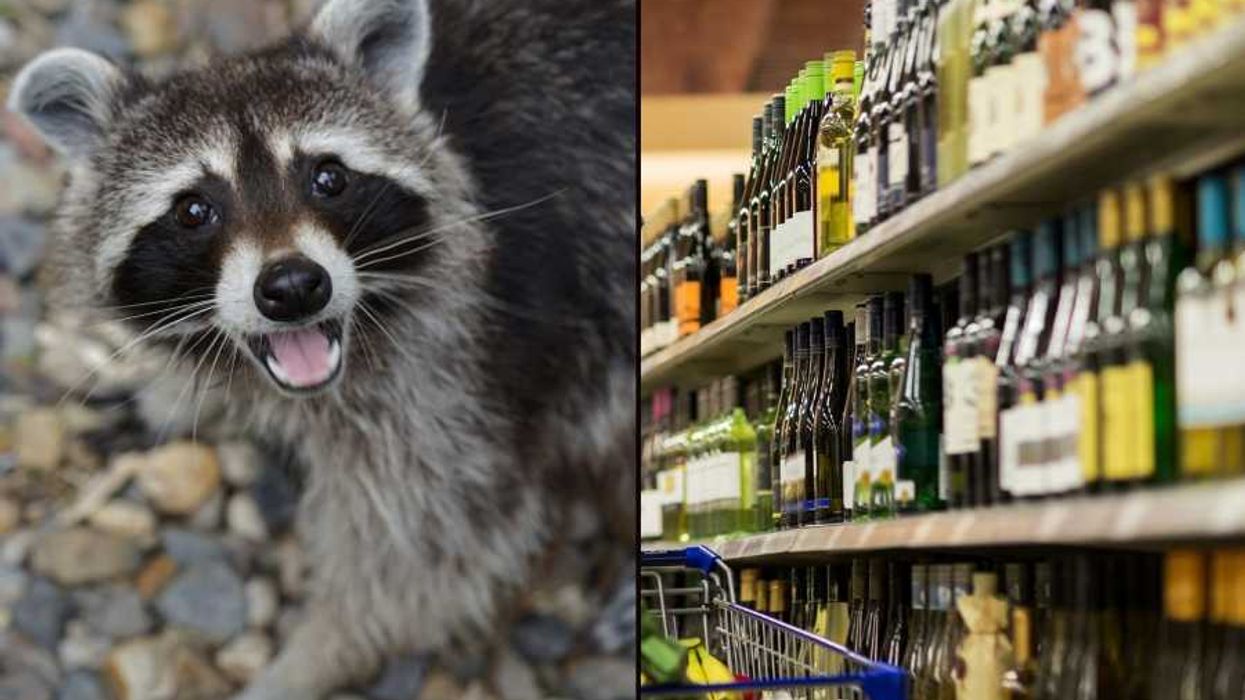

 Image artifacts (diffraction spikes and vertical streaks) appearing in a CCD image of a major solar flare due to the excess incident radiation
Image artifacts (diffraction spikes and vertical streaks) appearing in a CCD image of a major solar flare due to the excess incident radiation

 Ladder leads out of darkness.Photo credit
Ladder leads out of darkness.Photo credit 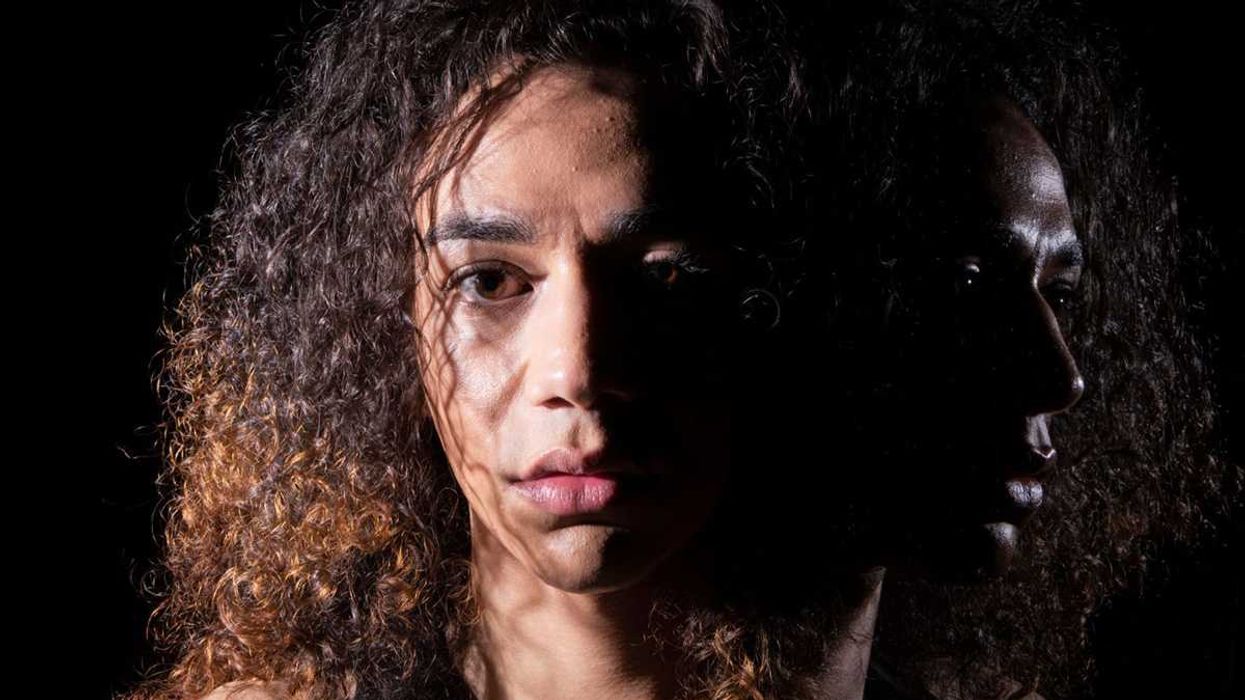 Woman's reflection in shadow.Photo credit
Woman's reflection in shadow.Photo credit  Young woman frazzled.Photo credit
Young woman frazzled.Photo credit 
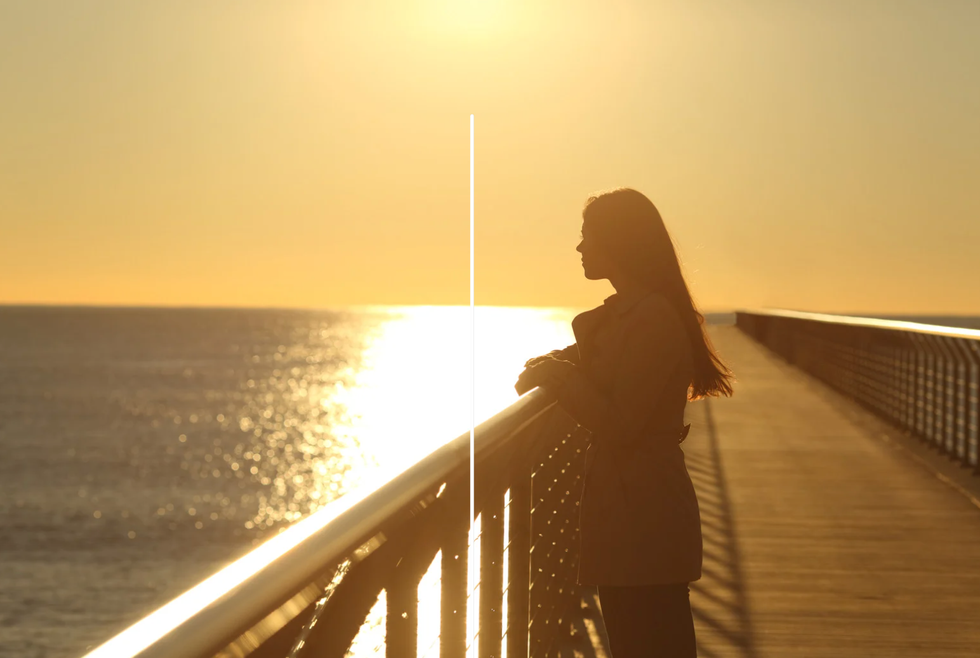 A woman looks out on the waterCanva
A woman looks out on the waterCanva A couple sits in uncomfortable silenceCanva
A couple sits in uncomfortable silenceCanva Gif of woman saying "I won't be bound to any man." via
Gif of woman saying "I won't be bound to any man." via  Woman working late at nightCanva
Woman working late at nightCanva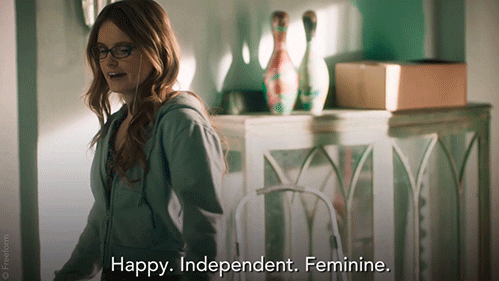 Gif of woman saying "Happy. Independent. Feminine." via
Gif of woman saying "Happy. Independent. Feminine." via 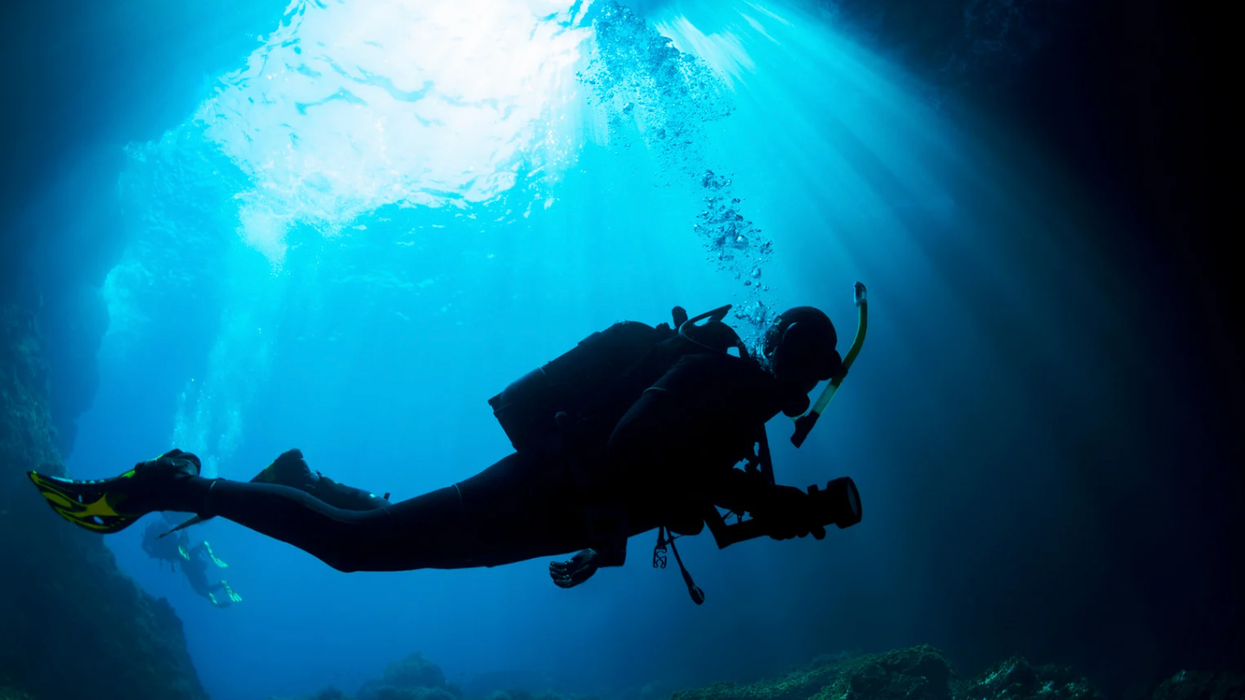
 Yonaguni Monument, as seen from the south of the formation.
Yonaguni Monument, as seen from the south of the formation. 